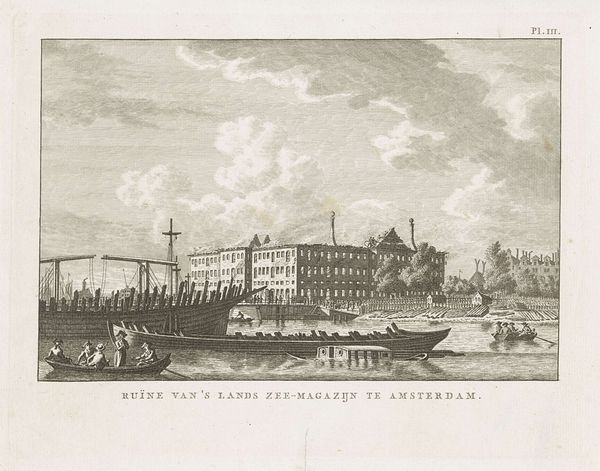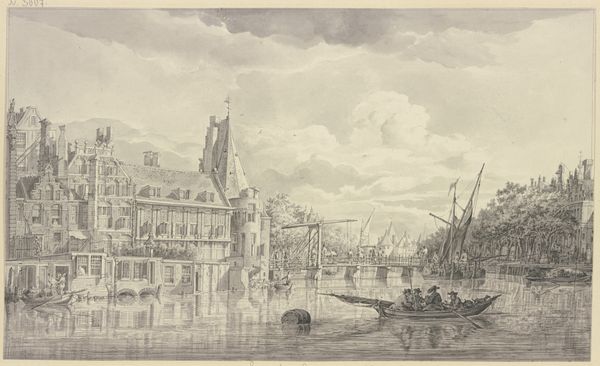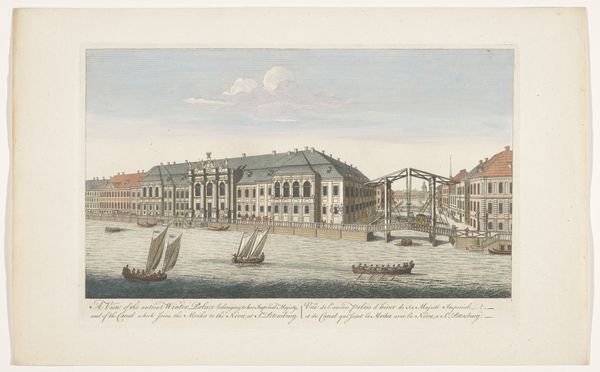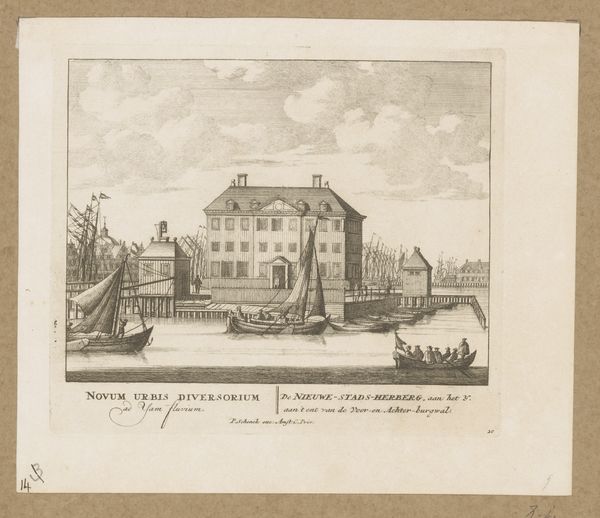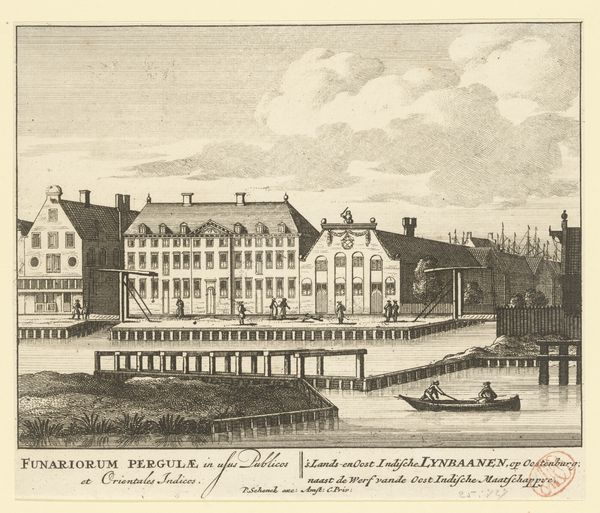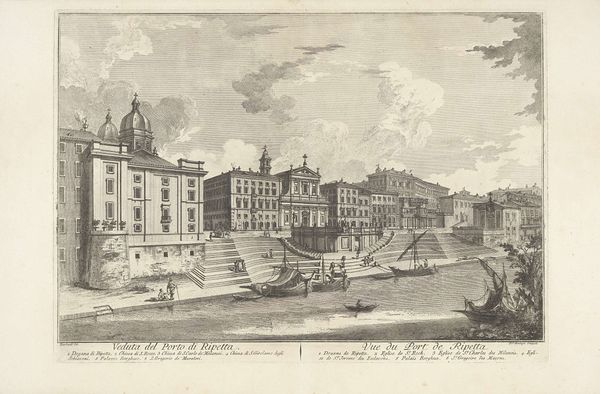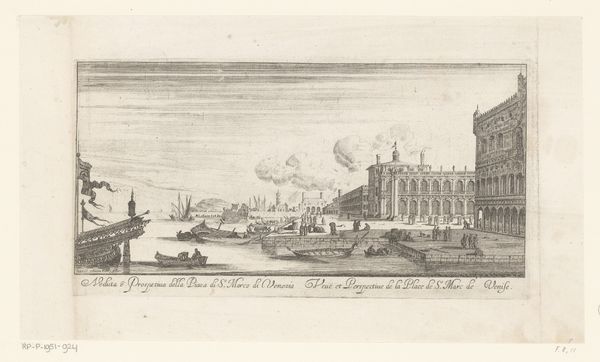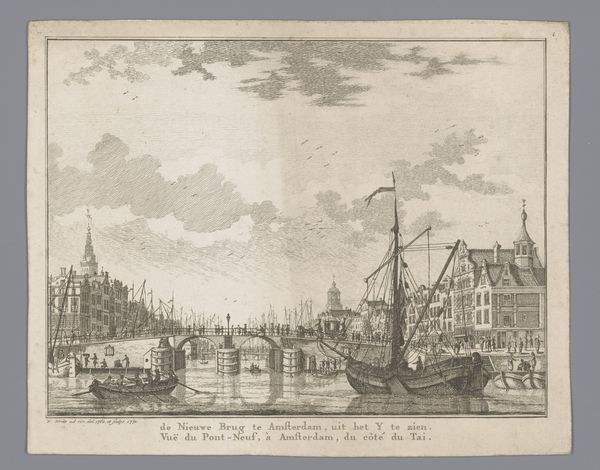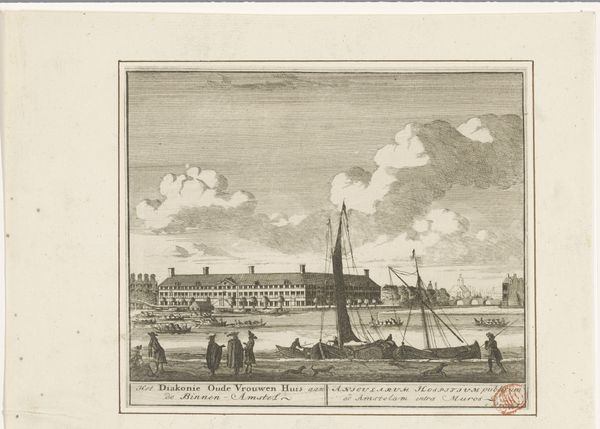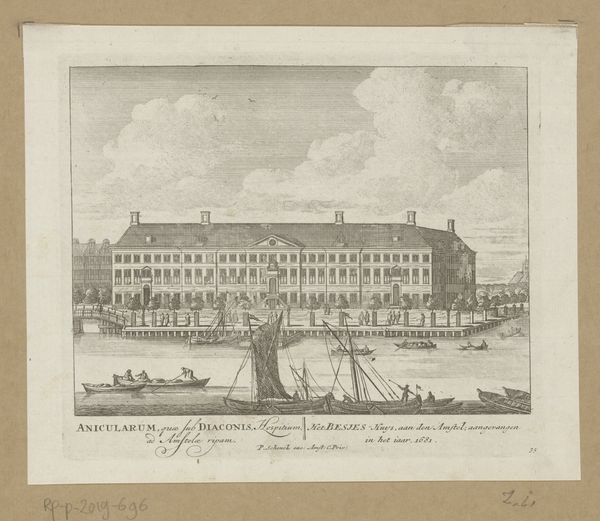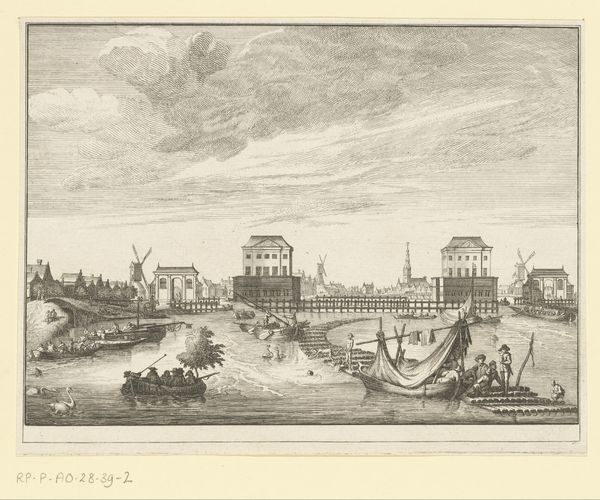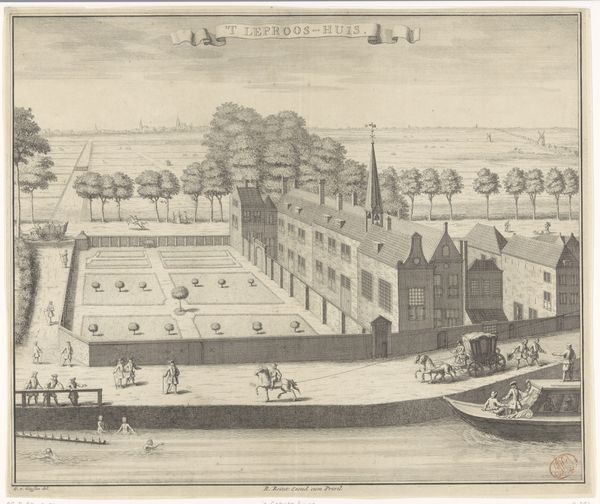
drawing, print, etching
#
drawing
#
baroque
#
dutch-golden-age
# print
#
pen sketch
#
etching
#
landscape
#
cityscape
Dimensions: 203 mm (height) x 338 mm (width) (bladmaal)
Curator: Right then, next up we have Reinier Nooms' "To blokhuse ved Amstel, Amsterdam," an etching dating back to the mid-17th century, specifically somewhere between 1651 and 1654. What jumps out at you? Editor: It's the water, definitely. It dominates everything, reflecting those boxy buildings and the airy sky. Feels almost Venetian, this watery world. Curator: Interesting. Venice of the North, indeed. Nooms was, in fact, a sailor, or at least very familiar with the sea, earning himself the nickname "Zeeman." Editor: Ah, that makes total sense! The maritime imagery is key here. Those blockhouses, or fortifications, appear almost like grounded ships, defending the city but also vulnerable, surrounded. They become symbols of security and fragility existing side-by-side. Curator: The tension there is really captivating, isn’t it? Looking closer, the scene's bustling with small boats, people milling about on the roofs. A real slice of life happening despite the military nature of the structures. Editor: Right. I mean, notice how even the smoke from the chimneys seems…decorative almost? Like another flag being waved. It reminds me that cities, especially port cities like Amsterdam, are about flows—people, goods, ideas all intersecting. And the image itself becomes a symbol for that interconnectedness. Curator: And of course, we are viewing this particular etching, which would have itself contributed to that interconnectedness, with prints as one of the means of spreading the image of the city across borders and time. Editor: Absolutely, it's easy to overlook sometimes, this "pen sketch," but each line has intent—carefully plotted in cultural circulation, and, you know, now preserved and revisited here centuries later. Curator: The city speaks to us. Well, I certainly felt I gained something new to hold on to today. It always amazes me how a single image can ripple outward with new interpretations. Editor: Agreed. And that etching reminds us how essential art is to documenting, yes, but also, creating history, wouldn't you say?
Comments
No comments
Be the first to comment and join the conversation on the ultimate creative platform.
